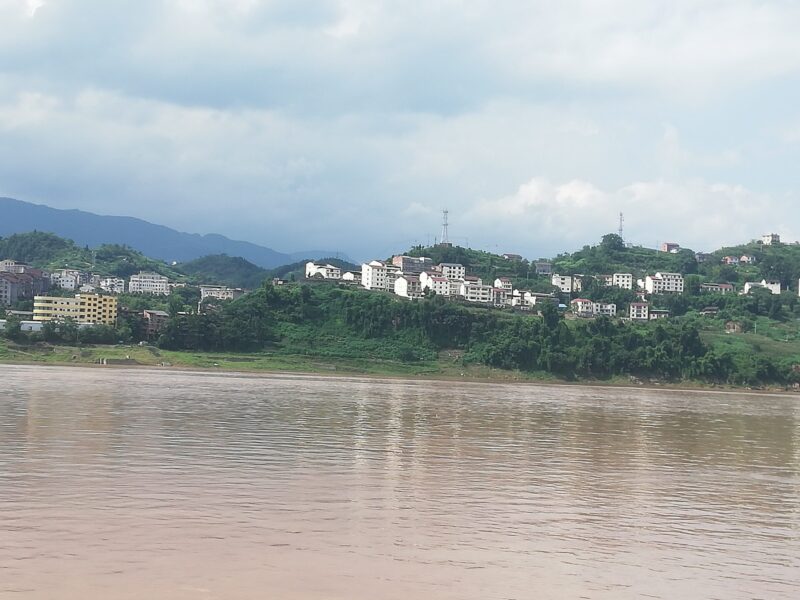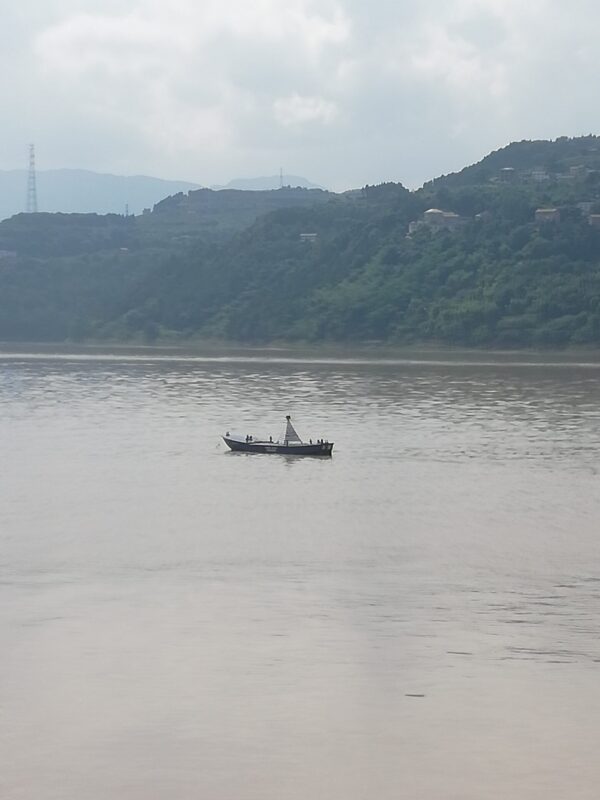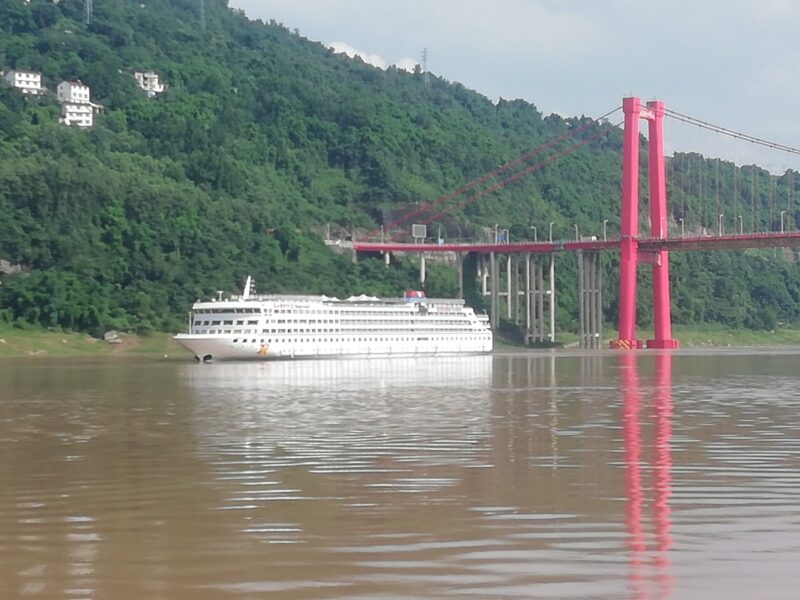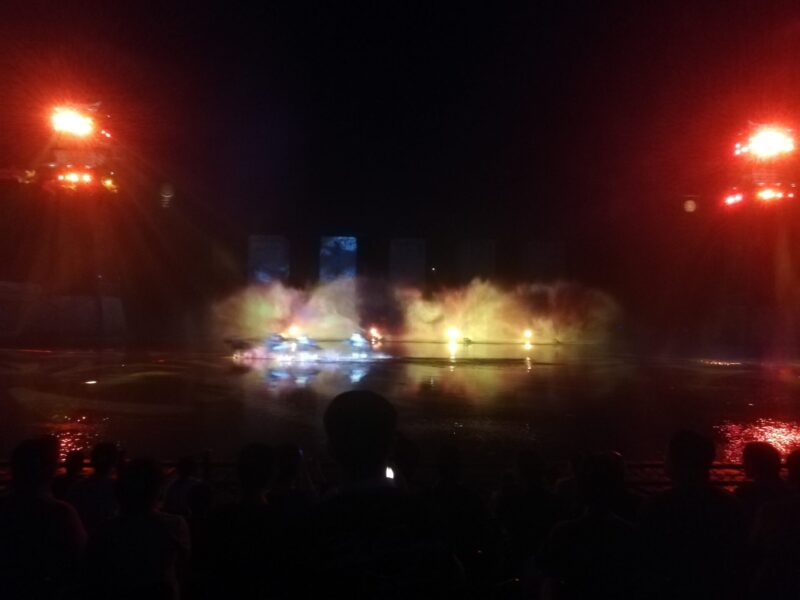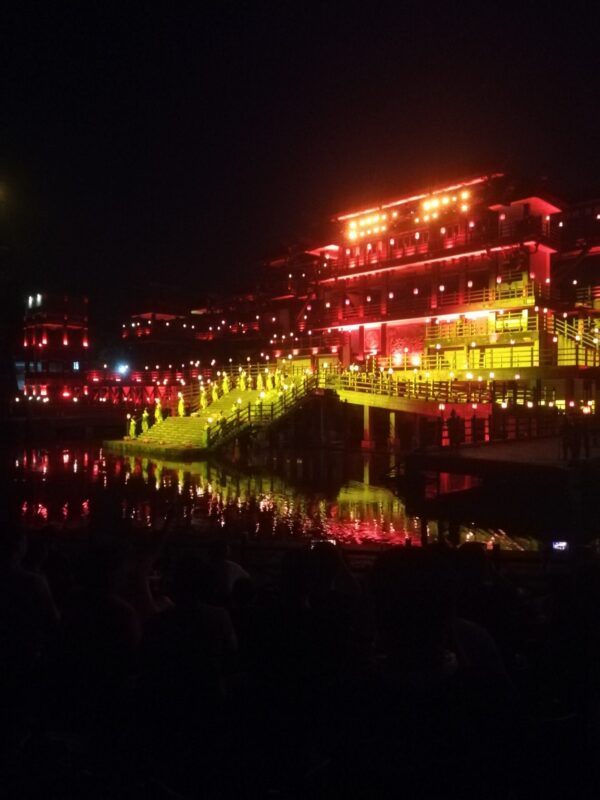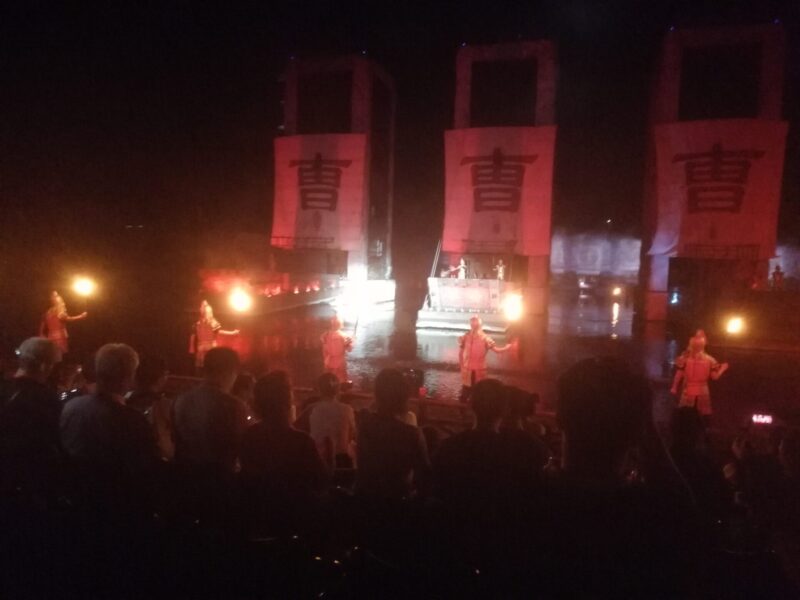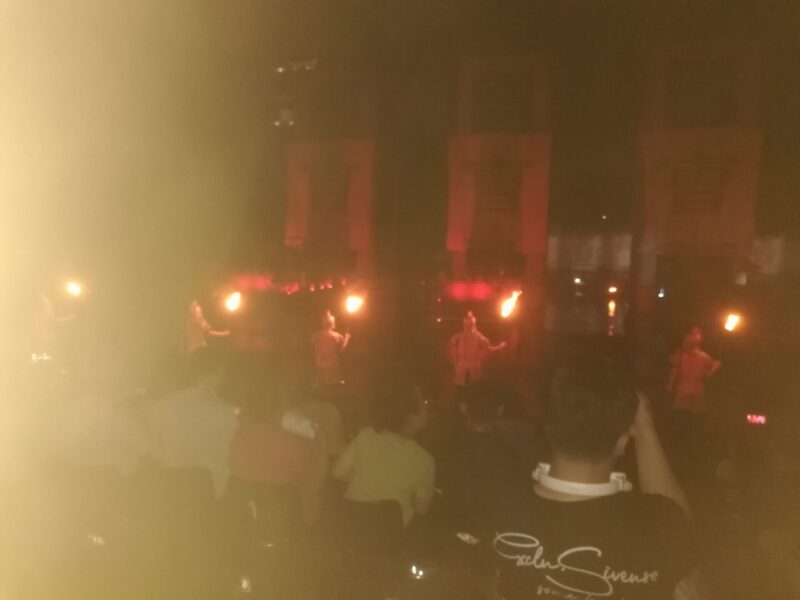The Guiguojingdu complex of temples is located on the top of Mount Ming at Fengdu and is reached from the river either by climbing 400 steps or by taking a cable car. The oldest temple is the Emperor’s Temple, bult by the Taoists 2,000 years ago and subsequent temples were Confucian and Buddhist.

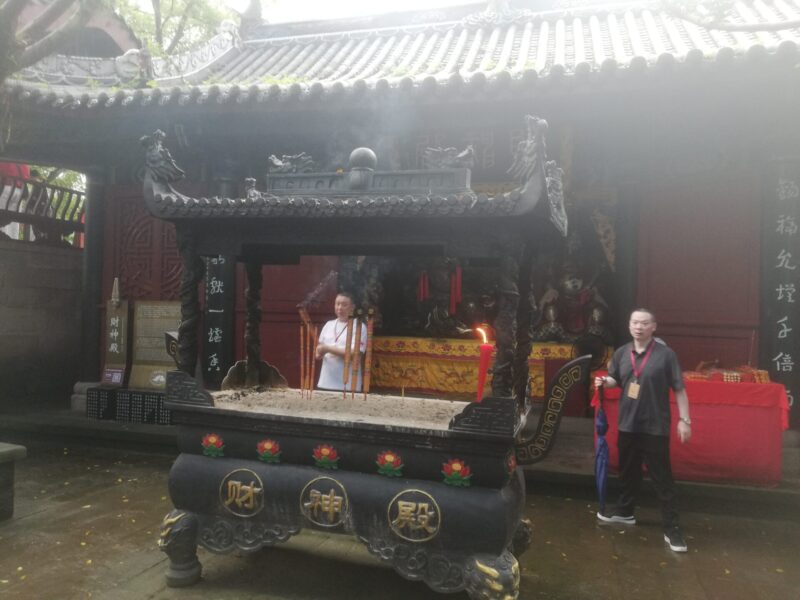

Built by the Ming Dynasty during 1403 to 1424, Naihe Bridge was originally an accessary building in front of the Liaoyang Palace and leads to Yanluo Palace in the underworld. It is also a checkpoint for assessing the good or evil deeds of people during their lifetime. A good person will pass over easily while a wicked person will be struck down by the guardians with sharp swords into the River of Blood.and torn apart by bronze serpents and iron dogs. On either side of Naihe Bridge stand two stone bridges, one gold and one silver. Upright and virtuous people are guided by gods over the gold bridge and ascend to immortality while those who practice kindness are greeted by Bai Wuchang and pass over the silver bridge. They are reborn into noble and wealthy families under the judgement of the underworld lord.
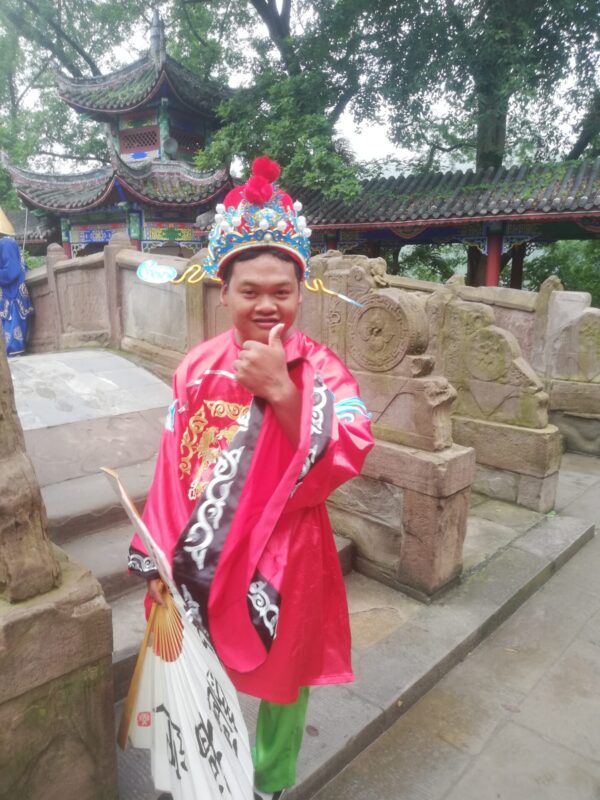
Liaoyang Hall was built in 1403-1427 (Ming Dynasty) and was originally the memorial hall for Zhu Chun, the son of Emperor Zhu Yuanzhang. It was rebuilt as the Grand Hall of the early Qing Dynasty leaving only the mountain gate and front hall. In 1983 it was rebuilt in the Qing style. The front hall has a statue to the Maitreya Buddha (future Buddha) while the rear hall has statues of the Three Buddhas, Guanyin, Mahashamaprapta Kashyaya and Ananda. There are 18 statues of Arhats on either side while the guardian deity Weituo is sculpted opposite them.
On the right side of the Liaoyang Hall there is a staircase of 33 steps known as the Staircase to Heaven. Each step is one step to Heaven and the staircase leads to the Jade Emperor’s Hall.
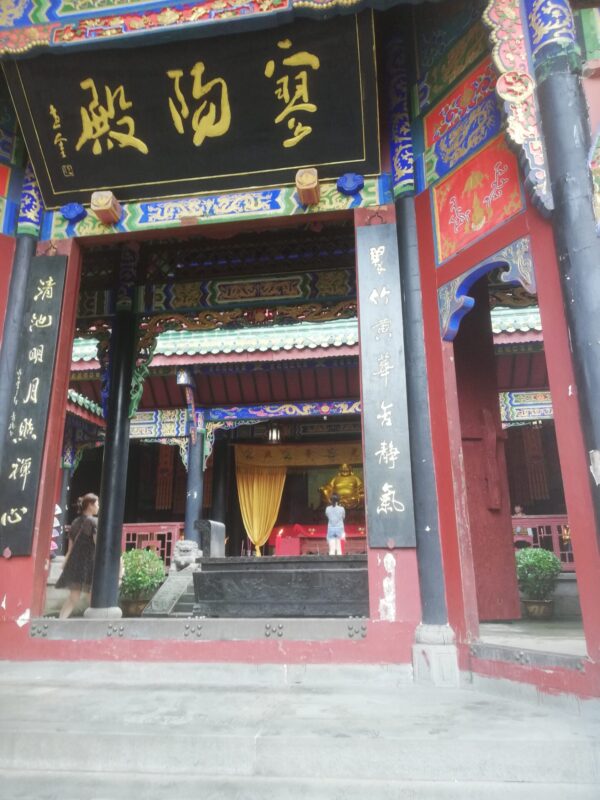
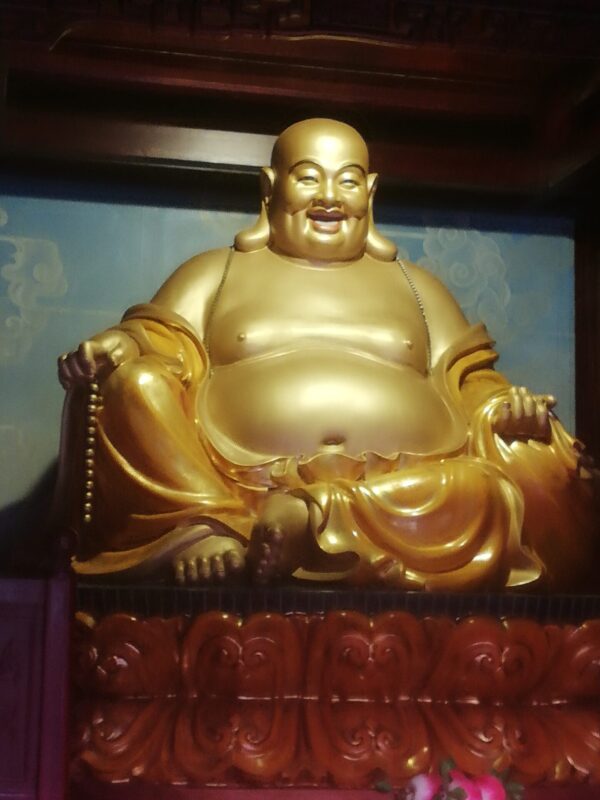

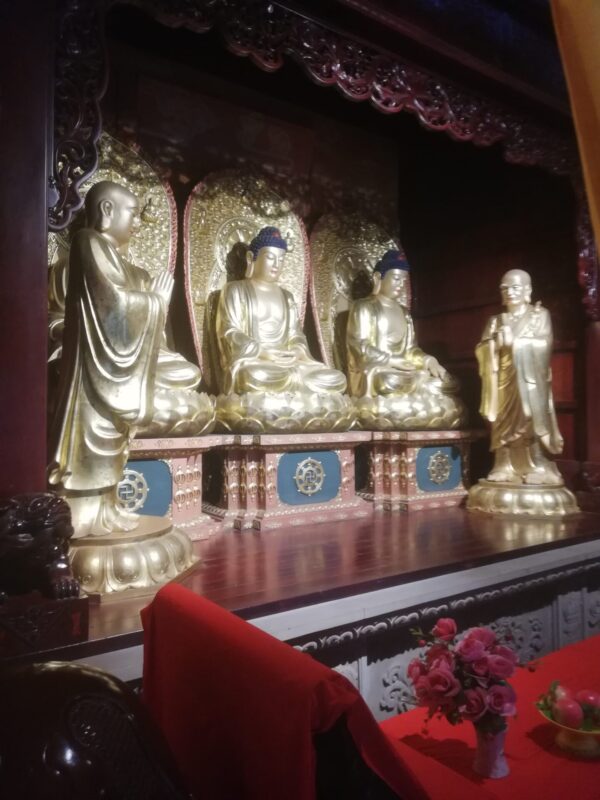
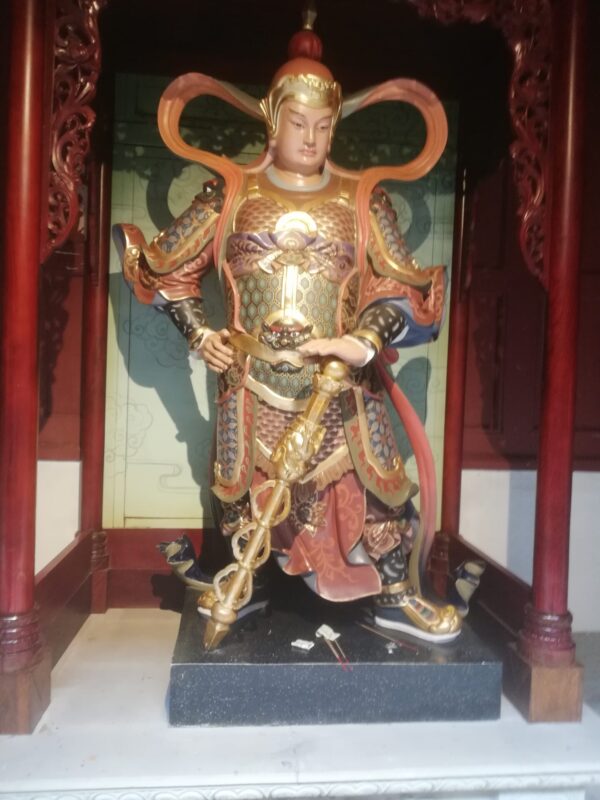

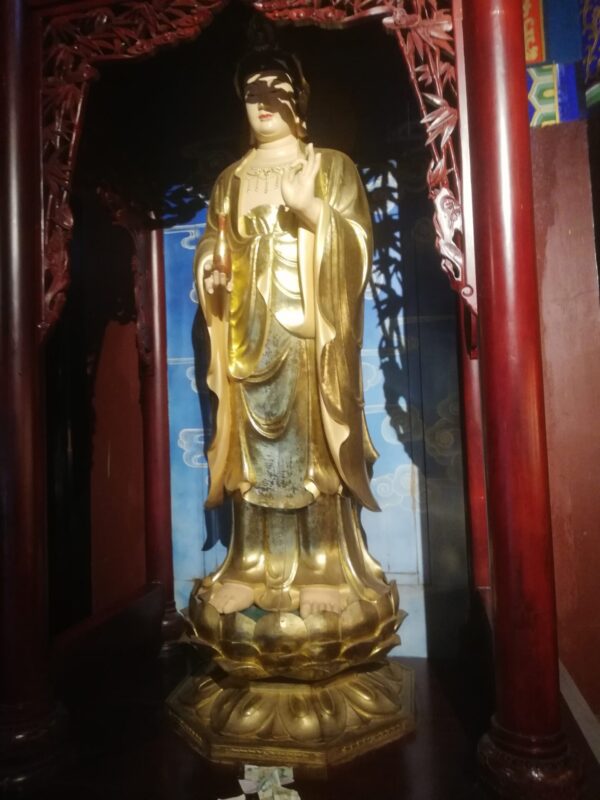
Originally known as the Lingxiao Palace, the Jade Emperor Temple was rebuilt in the 4th year of Kangxi’s reign in the Qing Dynasty. It contains an enshrined statue of the Jade Emperor followed by statues of the Queen Mother of the West and military advisor Sun Bin. At the side are sculptures of Laozi, Zhenwu (God of War), Duke Zhou, Peach Blossom, Thousand-Mile Eye and Wind-Accompanying Ear.
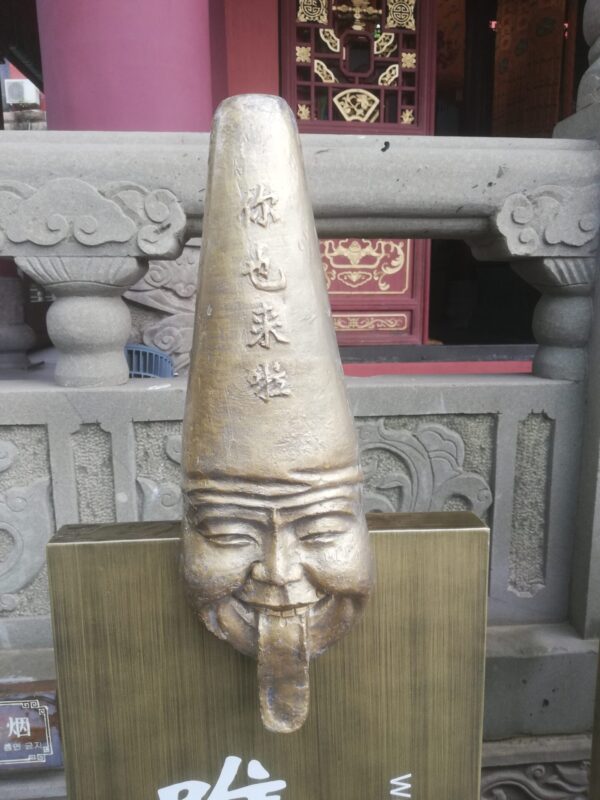
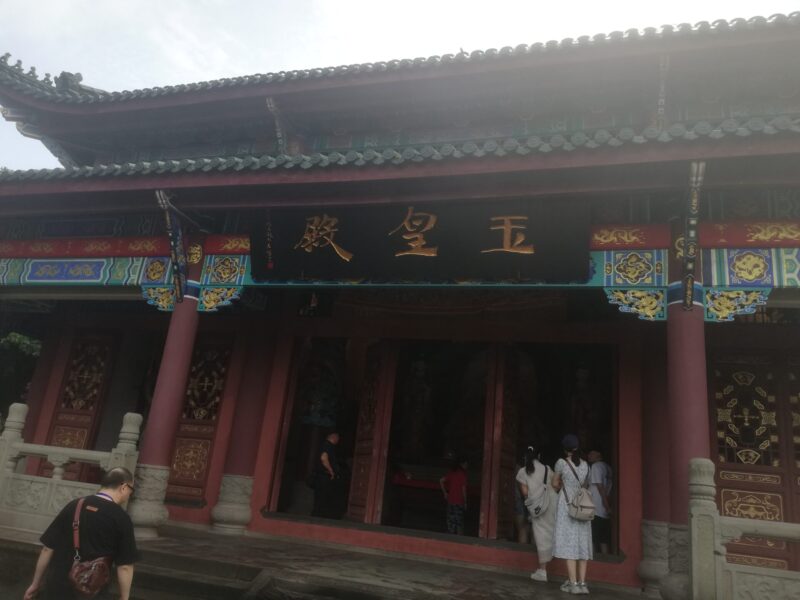
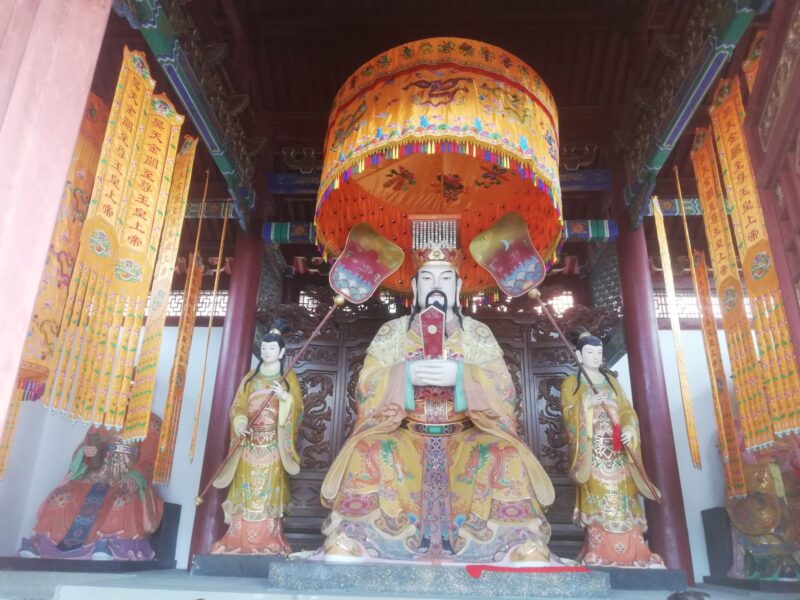


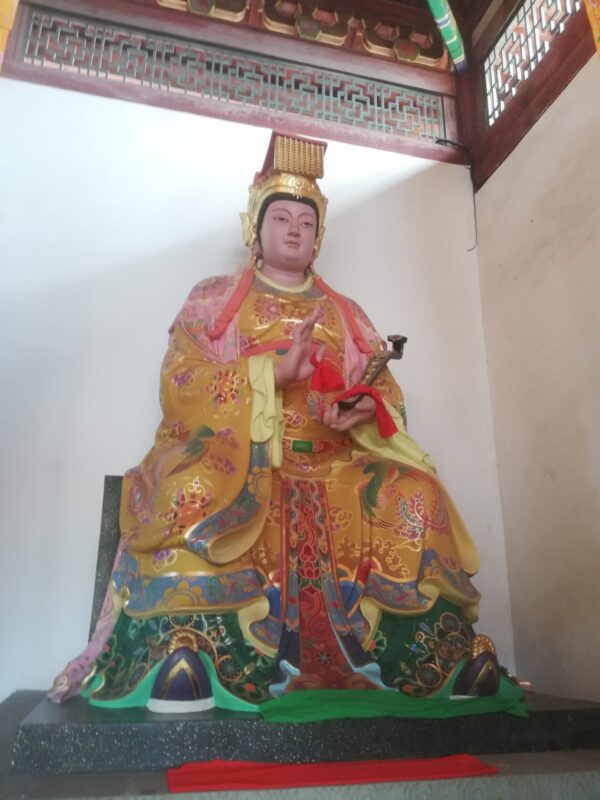


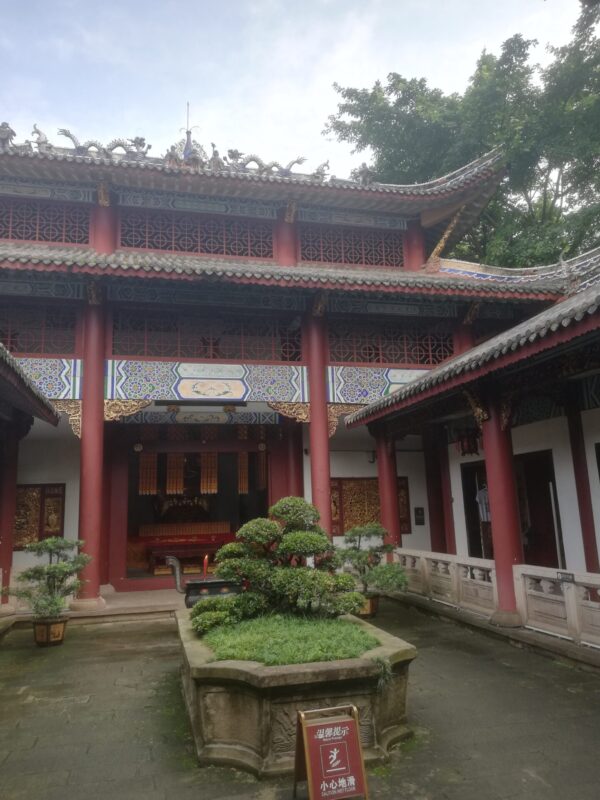
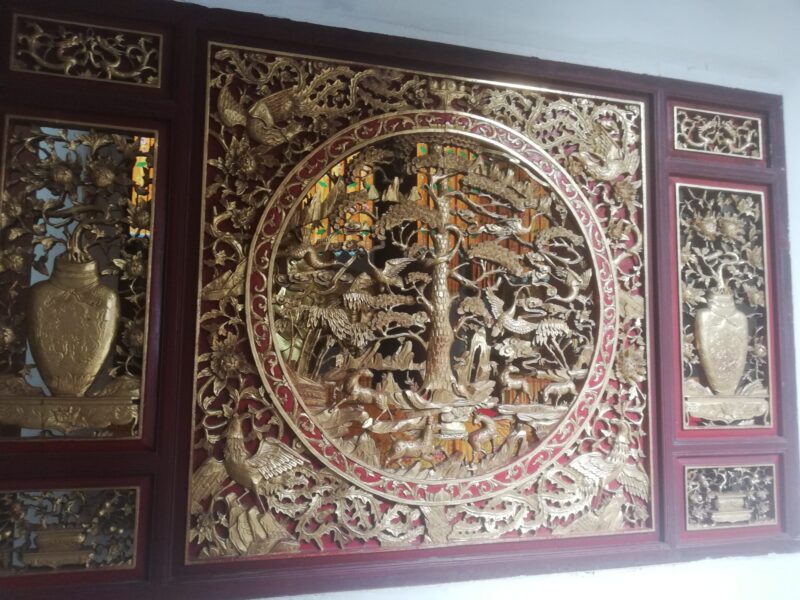
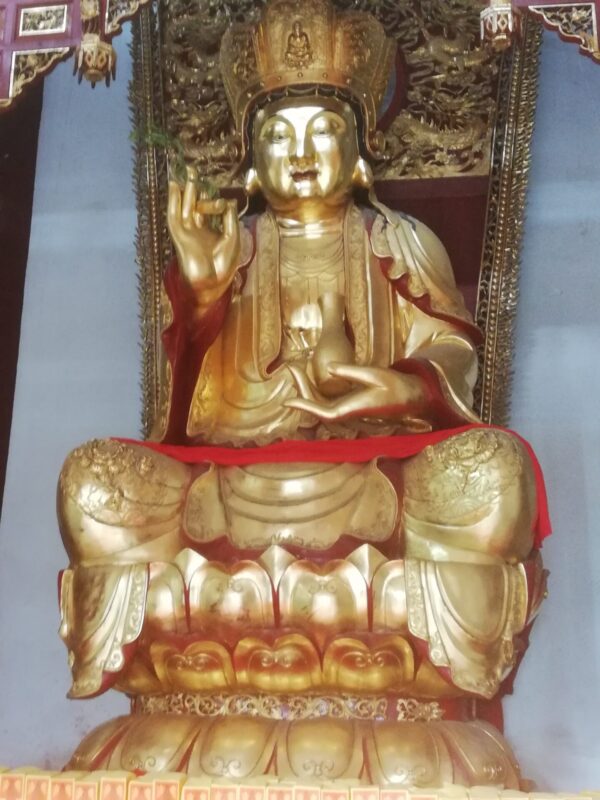
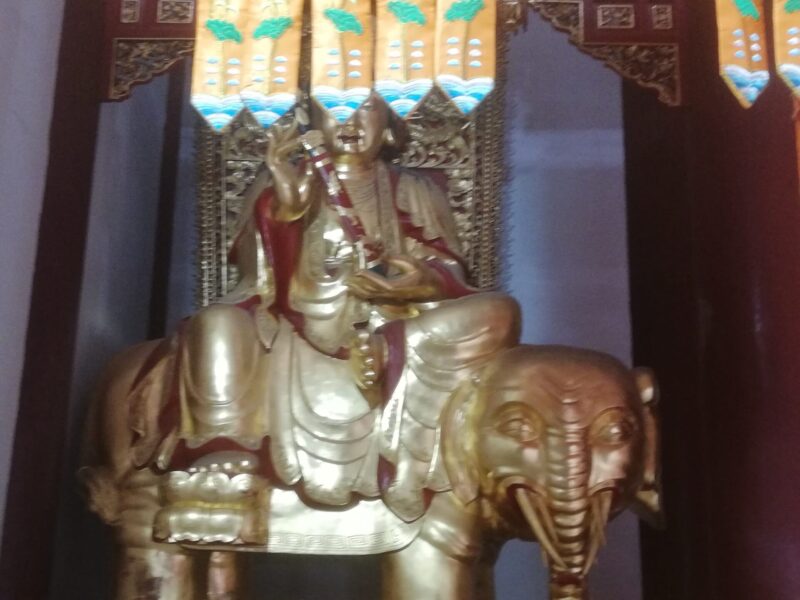

The name of the Bai Zi Hall refers to a legend that says that the Boddhisatva enshrined in the hall can bless women with smooth childbirth and the healthy growth of their children. The hall contains statues of Guanyin, Manjushri and Samantabadhra carved from camphor wood imported from Malaysia.
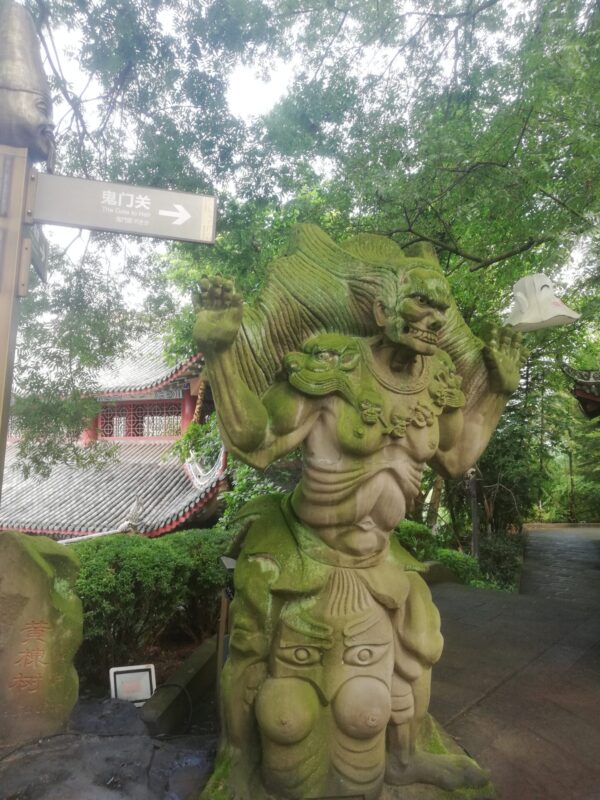
Originally built during the Han Dynasty, the legendary boundary separating the yin and yang realms is the second checkpoint where the deceased report to the underworld. Sixteen ghost kings and gatekeepers guard both sides inspecting passing spirits. Those who have done good deeds in their lifetime and carry a “guide” can pass smoothly while evil spirits are subjected to strict inspection, identity verification, trial in the Ten Courts of Hell and subsequent punishment in Hell.
Huangquan Road. The term Huangquan originally referred to underground springs and later came to be used as a synonym for the underworld. This allusion originates from the story “Duke Zheng of the Eastern Zhou digging the earth and seeing his mother”.
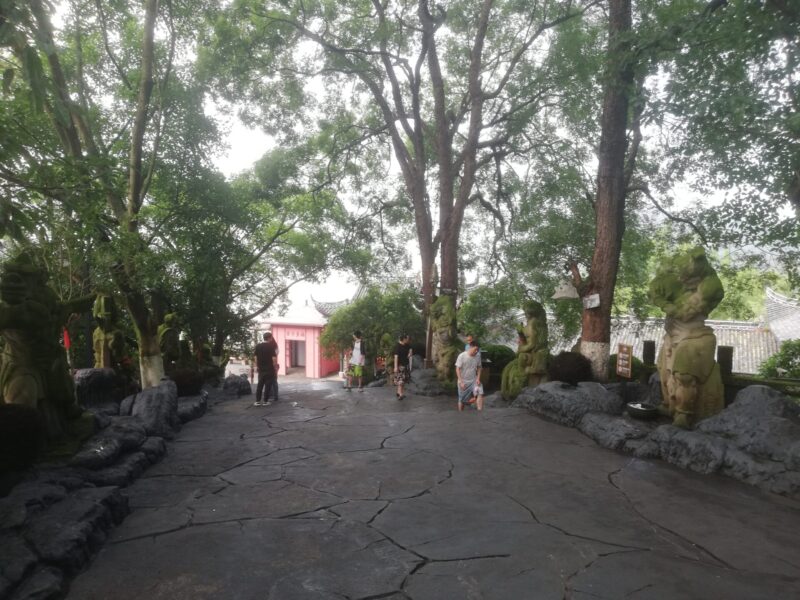
The central figure in the next palace is the famous Chinese folk deity Zhong Kui, known for his fiery red hair, golden face, bearded chin and bare chest and arms. He was rumoured to have been a successful imperial examination candidate and was known for his upright conduct during his lifetime. Following his death, he became a divine figure tasked with exorcising ghosts and preserving righteousness. Flanking him are two attendants, the judge-in-command “Hanyuan” and the vanguard “Fuqu”.
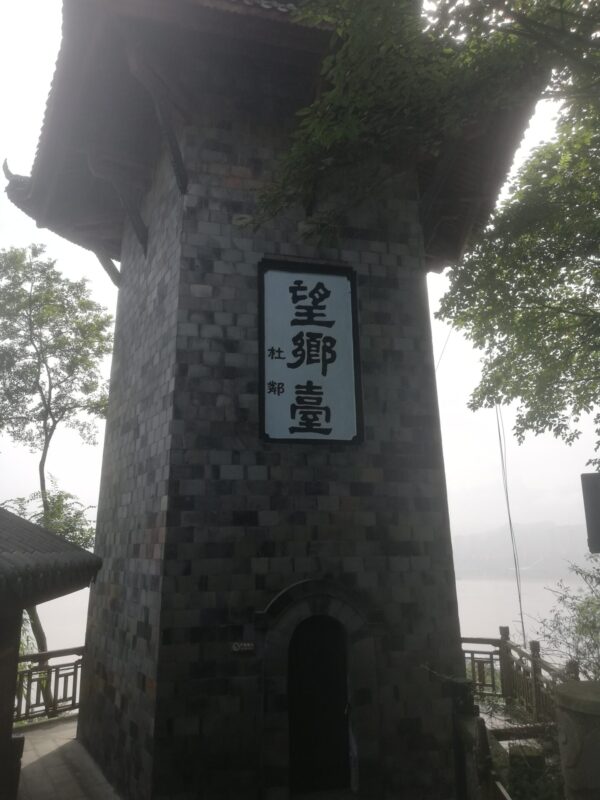
This tower gave the soul of the deceased a week to converse with its loved ones before it as lost for ever.

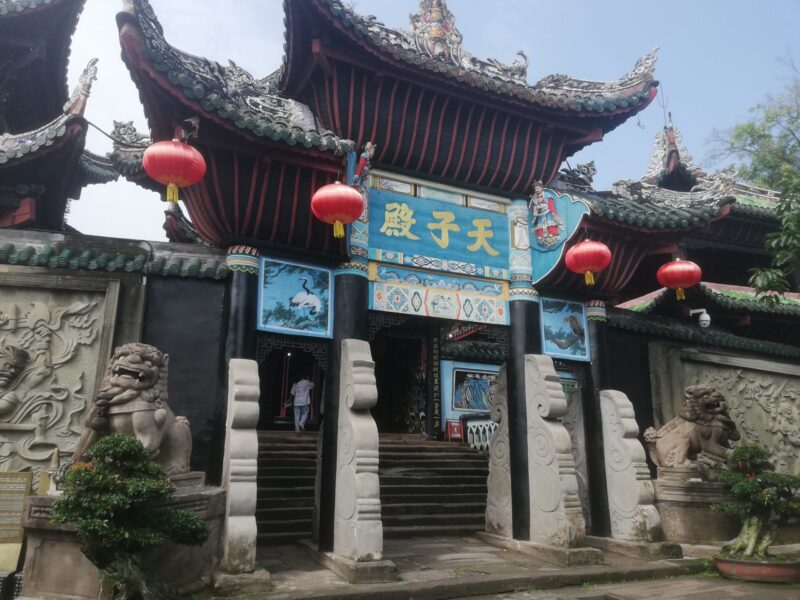
The Imperial Palace, originally built in the Western Jin Dynasty, was first named “Qianzhu Hall”. It was renamed “Xiandu Guan” during the Tang Dynasty, “Jingde Guan” during the Song Dynasty and also known as “Baihe Guan” and “Fengdu Guan”. In the Ming Dynasty it was renamed “Yuanwang Hall” but was later destroyed by a great fire. The current Imperial Palace was rebuilt during the Qing Kangxi reign (1664) and was initially named Yan Jun Hall. It is the oldest and largest temple complex on the sacred mountain with three sections including a memorial archway, mountain gate and main hall arranged in a staggered manner along a central axis.. In the centre sits a 6-metre high statue of the Yin Emperor with an altar behind him enshrining the Empress of Heaven.
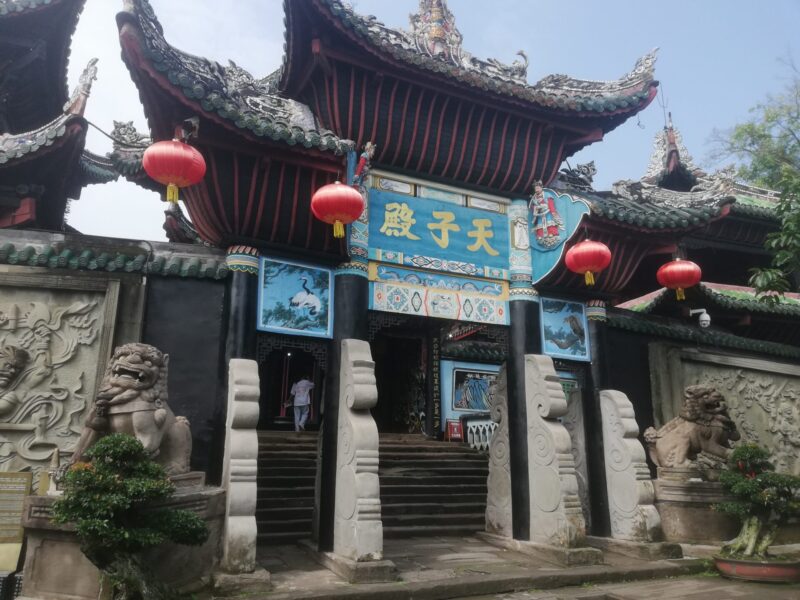


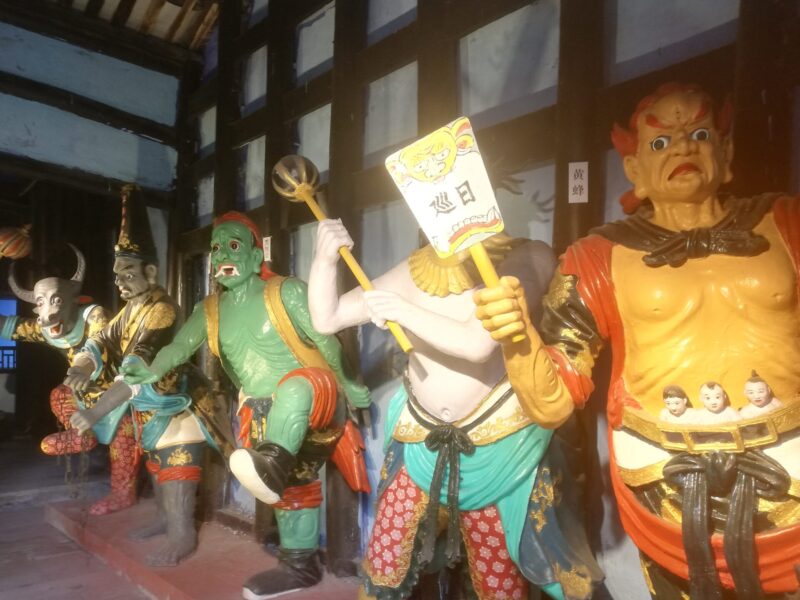
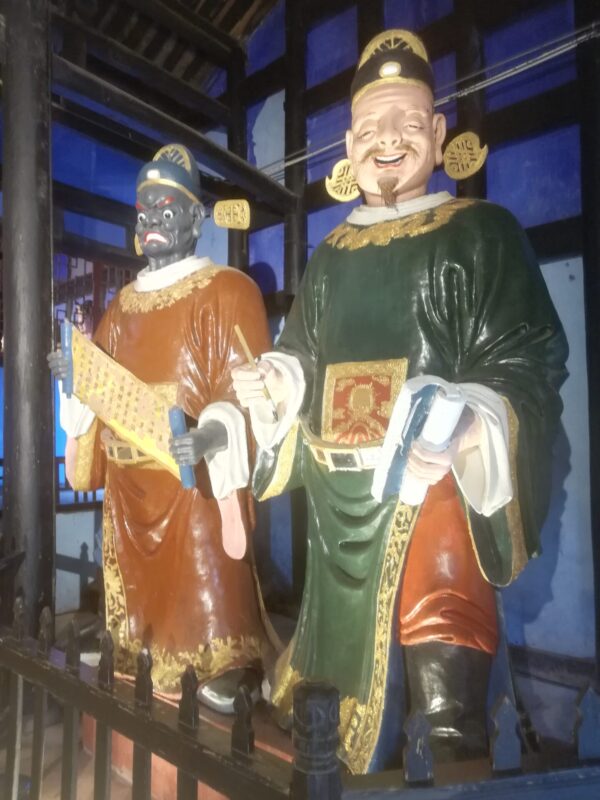

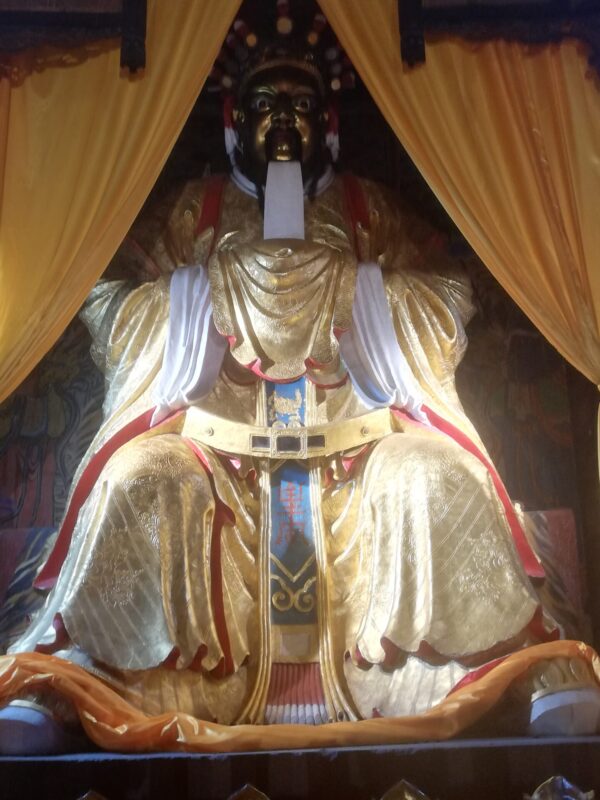
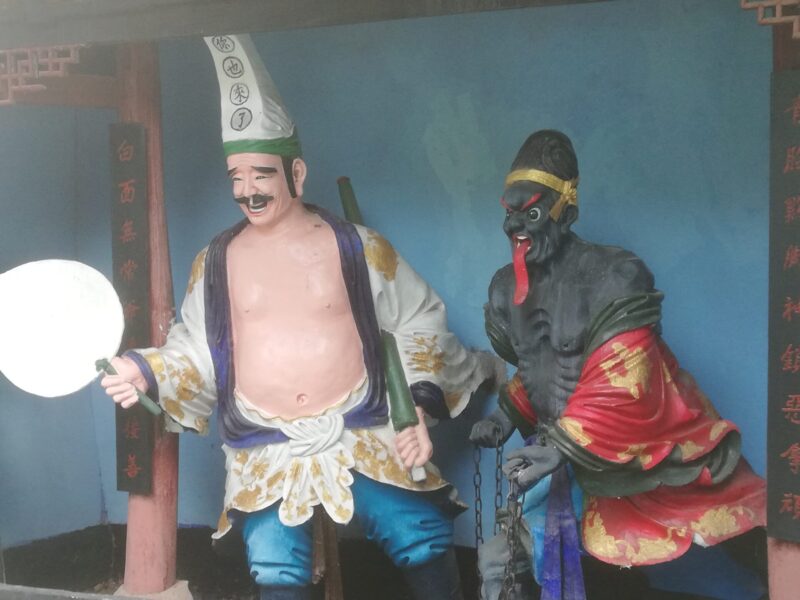
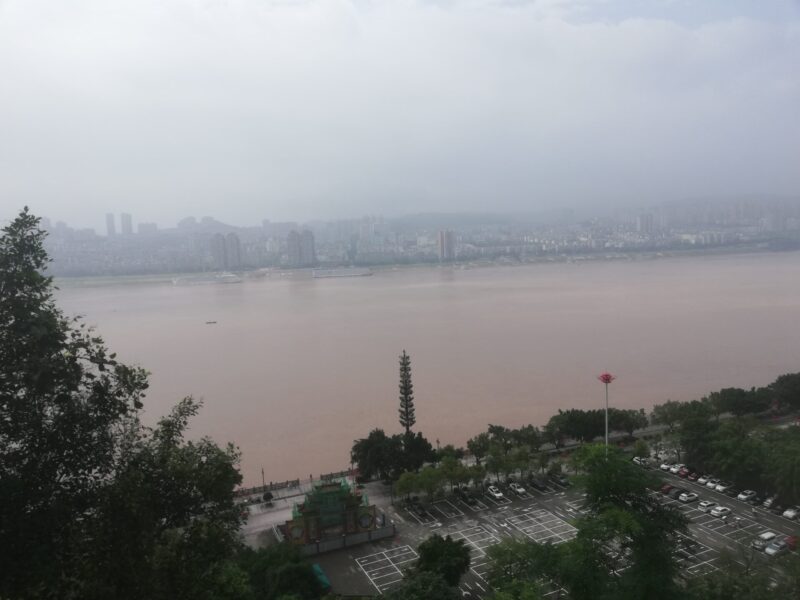
View from the cable car down Mount Ming
The “Three Kingdoms” show was ultra-spectacular. A bus took us on a 30-minute journey up a mountain above the large town of Zhongxian to the scene of the event. Based on events of the 4th century AD there were battle scenes with men on horses and massed infantry battling it out with four spectator sections (each holding perhaps 1,000 people) on wooden stages which moved around into different positions. The costumes were magnificent, the music and gunfire deafening and some beautiful dancing. A women meant to be representing the moon descended from the heavens on a trapeze and there was some stunning dancing by dozens of young girls in front of a spectacular palace which lit up in different colours. At one point the pool in which the fighting took place was set on fire. Towards the end a huge ship hove into view with acrobats on trampolines doing a stunning routine. It was a mixture of opera, film and circus. Magnificent. We were disgusted to see a number of people leaving just before the end without waiting to applaud the performers.
